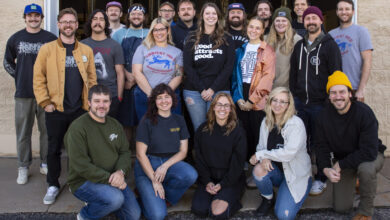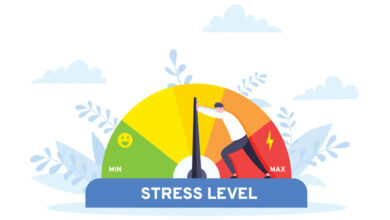Your Business Can’t Do Everything
If your business tries to do everything, you’ll do nothing well

If you try to do everything, you’ll do nothing well.
Product mix
The definition of all the things you offer your customers is known as a product mix. A menu at a restaurant or a price sheet from a distributor are examples of a product mix. Some places, like In-N-Out Burger, have small product mixes, whereas the Cheesecake Factory has a 21-page menu with over 250 items on it. If your business is primarily MOTO (mail order, telephone order) or eCommerce, having a wide product mix can be a good thing because your core competency is shipping and distribution. However, if your product mix has a range of bespoke services (completed by hand or with customer collaboration), you must consider multiple factors, including materials and labor, to get the assortment just right.
Consider COGS
Cost of goods sold (COGS) is the base expense to create the object or application. It’s typically the expense of the materials before time and labor are incorporated. Your basic business calculations all rely on it:
Gross Profit = Price – COGS
Revenue is the most important part of any business, but profit is a close second. You got into business to make money, right? That means revenue and profit are likely your primary concerns. However, before determining which applications to offer your customers, you need to figure out your cost structure. You can bundle labor and overhead into the cost of raw materials to get a baseline COGS for any product or service you offer. Once you have your cost structure defined, you can determine which products and services to offer.
The customer is not always right
This may seem counterintuitive, but I always counsel my clients to ignore customer requests when determining their product mix. The reason: Most businesses fail due to poor cash flow. They also fail because the owner (you) spends too much time in the business and not enough time on the business. Offering too many options or services can stretch you too thin and leave you with zero time for the things that matter – family, mental health, etc. When putting together your optimum list of services, consider two specific factors: Desire and the right balance of profit, revenue, and time.
Desire
Put simply, if you love to do it, it absolutely needs to be in your mix. You are guaranteed to work on it and provide excellent quality if it is a passion. It may provide razor-thin margins, but it will satisfy the drive to continue working and provide an excellent customer experience. It can also be a point of differentiation from the competition that can get customers in the door. From there, you can upsell and cross-sell to more profitable products and services. As Simon Sinek famously said, “Working hard for something we don’t care about is called stress. Working hard for something we love is called passion.” To be a successful business owner, you need to eliminate as much stress as possible and maximize your passion.
Profit, revenue, time balance
If it costs a penny and you sell it for a dollar, it’s 99% profit. That’s amazing profit, but it’s only $1. So you need to sell a lot of those to stay in business. If it costs $29,000 and you sell it for $30,000, it’s 3.4% profit. That’s great revenue, but you still need to sell a lot to stay in business.
Try to identify no more than five services that can produce a good gross profit (40-80%) without many resources. Highly customized applications may be great for your portfolio and advertisements, but they are typically not what drives the bottom line. Instead, a mediocre product with good gross profit that you can churn out within a day typically drives the business.
Let’s go back to restaurants as a use case:
- The chocolate lava cake takes 30 minutes to make and always draws attention from other diners when it’s brought out. But soup has a 400% profit margin and serves in seconds.
- Fancy cocktails sell for double digits, but a $1 pot of coffee can net $20 at the end of a meal.
- The steak or lobster might list as “market price,” but the surf and turf generates higher profit at a slightly lower price point.
It’s often the less glamorous applications that drive the business, as long as the profit margins are reasonable, and you can control your costs.
Common materials
There is a quick cheat that can help expand your product mix without raising costs. Look for multiple applications using the same materials — for example, pressure-sensitive adhesive PVC films for digital printers. One roll of digital vinyl can create stickers, labels, decals, wall graphics, floor graphics, vehicle graphics, posters, signs, point of purchase displays, photography, fine art, wraps, directional signage, and business cards — often using the same artwork. It eliminates the need for a diverse inventory of materials, and the upsell opportunities are enormous.
What about the customer?
What the customer wants depends entirely on what your competition in the area looks like. Specialization is the best way to secure a loyal and profitable customer base. Picking a niche allows for higher quality work and higher profits. If your competition is a national retailer dipping their toe into the industry, they will starch their margins hoping the volume of orders brings in the profit. Stay away from those applications as much as possible. Anyone can buy the equipment you have, and the manufacturer will be happy to take their money. What the big operations do not have is excellent customer experience and the craftsmanship to produce one-of-a-kind items. This is your competitive differentiation.
Balance is key
If you focus on things that you love to make and can turn them around quickly for a modest profit, you will find that being your own boss is as fun as it should be. If your goal is to generate wealth, don’t dismiss the boring products and services. The big-ticket items are flashy and work great in your advertising campaigns, but the quick one-hour jobs will keep the regular customers and gain those referral clients that propel your business forward. The popular applications in your area can lead to price wars and poor referral rates. Pick an area of expertise and be the best in town. Take pride in your work. The right product mix is the best positioning you need for the long-term success of your business.



